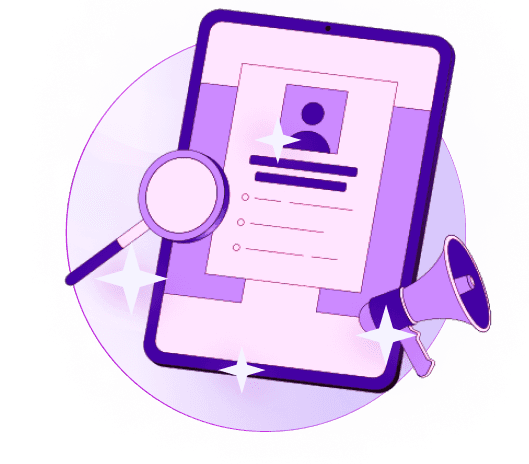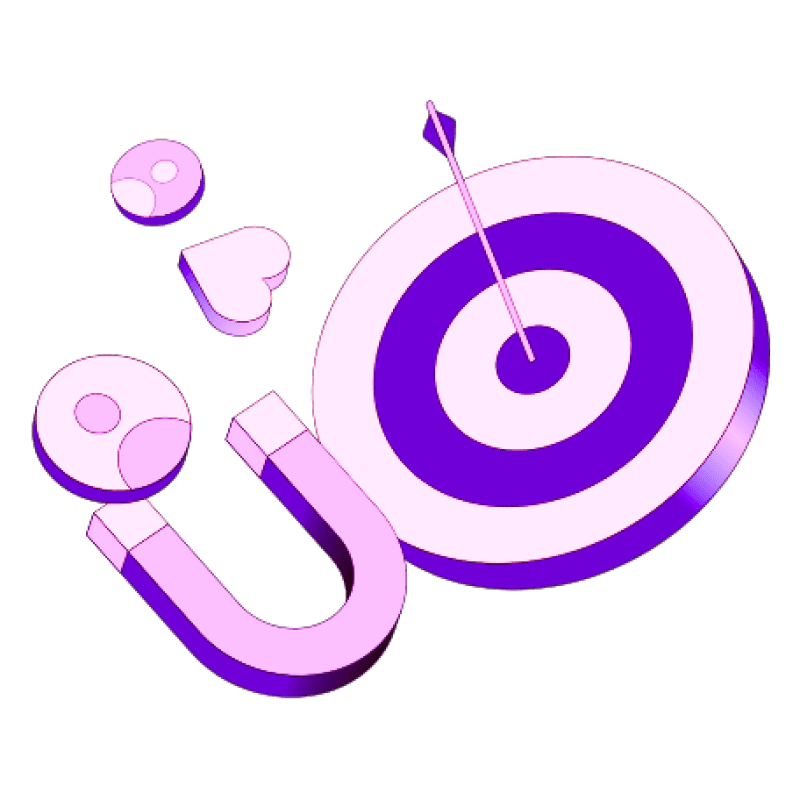Blogs
Articles

What Is Predictive Lead Scoring and How It Improves Lead Qualification
Did you know only 1-6% of leads end up becoming customers?
Predictive lead scoring works better than traditional methods because it uses data science and machine learning. The system analyzes patterns to find common traits between past converted leads and those that didn't convert. AI's impact speaks for itself - 98% of sales teams say it helps them prioritize leads better.
In this piece, we'll look at predictive lead scoring's basics, its inner workings, and ways you can use it to change your lead qualification process.
What Is Predictive Lead Scoring?
Predictive lead scoring uses machine learning and statistical algorithms to assess how likely a lead will become a customer. This data-driven approach looks at customer behavior patterns to determine which prospects need your attention first, rather than relying on subjective criteria.
How it is different from traditional lead scoring?
Traditional lead scoring gives points manually based on predefined criteria. To name just one example, opening an email might earn +5 points, visiting a pricing page +10 points, and having a relevant job title +20 points. This approach has inherent limitations because it:
Depends on static, often subjective criteria
Needs manual setup and continuous tweaking
Takes more effort as your database grows
Predictive lead scoring automatically analyzes huge amounts of data from multiple sources. The system generates immediate results that adapt over time. Traditional methods show who's ready to buy now, but predictive intelligence can identify potential buyers in one, three, or even six months.
What is a lead score and how it's calculated?
A lead score shows potential customers' likelihood to convert through a numerical value. Predictive models calculate these scores by analyzing:
Behavioral data: Website visits, email engagement, content downloads
Demographic information: Industry, company size, job title
CRM data: Past customer behaviors and purchase patterns
Third-party data: External insights like social media activity
Advanced systems use data mining techniques such as logistic regression to create formulas that determine conversion probability. Sales teams can prioritize outreach based on genuine intent rather than assumptions using the resulting score (typically between 0-100).
Why predictive models are gaining popularity?
Nearly 14 times more B2B organizations use predictive lead scoring compared to 2011. More importantly, 75% of high-growth B2B companies have implemented these AI-powered systems.
These impressive results drive rapid growth. Sales organizations using predictive scoring often see:
10-15% increase in sales productivity
10-20% increase in conversion rates
Reduced lead churn and improved pipeline velocity
Predictive lead scoring helps teams avoid repetitive tasks so they can focus on high-impact selling and relationship-building. The system finds high-value leads faster, which shortens sales cycles and prevents teams from wasting time on unqualified prospects.
How Predictive Lead Scoring Works?
A sophisticated system powers predictive lead scoring by analyzing data points that identify prospects most likely to convert. Let's get into how these systems really work.
Types of data used: demographic, behavioral, intent
Predictive lead scoring models need multiple data categories to generate accurate predictions. Demographic data has simple information such as job titles, company size, location, and industry. Behavioral data tracks interactions like website visits, email engagement, content downloads, and product page views. This digital body language shows real interest beyond what prospects directly state.
The system also uses intent data to track online behaviors that signal a prospect's potential interest in your product or service. Intent signals can include keyword searches, content consumption patterns, and engagement with relevant topics in a variety of platforms.
Role of machine learning and AI
Machine learning algorithms serve as the foundation of predictive lead scoring. These systems train on historical data from past leads and compare successful conversions against failed ones. The AI spots patterns linked to successful conversions and assigns weights to different lead characteristics based on how they affect conversion likelihood.
These models learn and adjust continuously. The model refines its predictions as more leads enter the system and their outcomes get tracked, which makes it more accurate with time. Unlike static rule-based systems, AI models adapt to changes in buyer patterns and market trends.
Examples of predictive lead scoring models
Different types of predictive scoring models exist today. To name just one example, Microsoft Dynamics 365 uses a machine learning model that needs at least 40 qualified and 40 disqualified leads during a chosen timeframe to train effectively.
HubSpot's system analyzes contacts to determine their chances of becoming customers within 90 days. It looks at factors like page views, email interactions, and firmographic information. The system creates a "Likelihood to close" score that helps teams prioritize their outreach.
B2B companies using these models have seen their lead-to-appointment conversion rates double, among other improvements like a fivefold increase in appointment-to-opportunity conversions. These numbers show how these systems make a real difference.
Building a Predictive Lead Scoring Model
Building a predictive lead scoring model that works takes careful planning. Your sales team can work much better when they focus on leads with the highest conversion potential.
Choosing the right lead scoring methodology
Your available data determines which methodology fits best. Predictive models need enough historical data to work - Microsoft Dynamics 365 needs at least 40 qualified and 40 disqualified leads to train its model. Your tech stack capabilities and resources play a key role in this decision. Companies with rich datasets can make the most of AI-driven predictive models. Organizations with limited historical data might find demographic or manual scoring works better to start.
Setting up scoring rules and thresholds
A clear scoring scale should follow your chosen methodology. Most companies find a simple 1-100 range works best. Points should be distributed strategically across categories instead of random assignment to individual rules.
The minimum score that makes a lead "sales-ready" defines your threshold. This score signals when marketing should pass the lead to sales. A typical 100-point system breaks down like this:
Prospect = 10 points
Lead = 50 points
Marketing Qualified Lead (MQL) = 75 points
Sales Qualified Lead (SQL) = 100 points
Using CRM tools like Salesforce or HubSpot
Modern CRM platforms make lead scoring easier with built-in capabilities. HubSpot lets you create custom scores based on fit and engagement criteria. Your defined rules help the system review records and update scores live.
Salesforce grades leads from A to F based on your criteria. This ensures marketing only sends qualified leads to sales. Both platforms offer AI features - Salesforce's Einstein Lead Scoring updates every 10 days. HubSpot analyzes thousands of data points to spot promising leads.
Persana.ai offers advanced predictive analytics customized to your business needs if you want to boost your lead scoring capabilities.
Automated lead scoring vs manual scoring
Manual lead scoring assigns points based on how you assess lead attributes and actions. This gives you more control but takes more work as your database grows.
Automated predictive scoring uses AI and machine learning to spot patterns from past conversions. This approach optimizes itself as it learns from new data. AI-powered lead scoring helps 98% of sales teams prioritize leads better. In spite of that, human oversight matters to catch relevant leads the system might miss due to lack of prior exposure.
Optimizing Lead Qualification with Predictive Scoring
The real work starts after your predictive lead scoring model becomes operational. Your team must execute the technology strategically and refine it continuously to tap into its full potential.
Sales and marketing team coordination
Predictive lead scoring connects marketing and sales departments by creating a shared framework to assess lead quality. These teams often clash over what makes a quality lead before predictive scoring comes into play. This friction reduces their effectiveness. A common evaluation language helps both teams work together better. Marketing can generate better leads while sales focuses on valuable prospects.
Teams should meet regularly to review campaigns, check lead quality, and adjust scoring criteria. Shared dashboards that show live lead scores and campaign metrics promote openness. This keeps everyone focused on goals and makes lead evaluation clear.
Better conversion rates and sales efficiency
Predictive lead scoring significantly affects sales performance. Companies that use AI-driven lead scoring have achieved:
70% increase in lead generation ROI compared to others
Conversion rates from prospects to qualified leads growing from 10% to 15-20%
30% increase in sales efficiency
121% increase in account engagement
Sales teams can spend more time building relationships with qualified leads because lead qualification becomes automated. The AI systems trigger workflows, campaigns, or sales alerts based on live lead score thresholds automatically. This reduces manual work.
Model monitoring and refinement
Predictive lead scoring needs regular updates to stay accurate. Your model's effectiveness can change due to market shifts, buyer behavior changes, and new product offerings. "Dynamics 365" updates itself every 15 days automatically to match new patterns.
Your model will work better if you:
Track key metrics: Check your lead-to-opportunity ratio, opportunity-to-close rate, and sales cycle duration monthly
Review quarterly: Update scoring criteria based on traits that lead to consistent conversions
Get sales feedback: Ask for specific input when leads don't qualify to improve future scoring
Persana.ai provides advanced analytics that will boost your lead qualification process with advanced AI technology if you want to improve your predictive lead scoring further.
Conclusion
AI-powered predictive lead scoring revolutionizes how sales teams qualify leads. Traditional methods depend on guesswork and manual scoring, while predictive models exploit huge data sets to identify the most promising leads. Your sales team can now focus their energy where it counts.
The results are impressive. Companies that use predictive lead scoring see their lead generation ROI climb up to 70%. Conversion rates double from 10% to 20%. Sales teams become 30% more productive by avoiding prospects that won't convert.
A successful predictive lead scoring system needs proper setup. The methodology should match your data. Clear scoring rules must define when leads move from marketing to sales. Modern CRM tools like Salesforce or HubSpot help automate this process.
Note that predictive scoring models require regular updates. Market conditions, buyer behaviors, and products change with time. Your team should review and refine the model quarterly based on conversion data and feedback from sales.
Key Takeaways
Predictive lead scoring transforms sales efficiency by using AI and machine learning to identify high-converting prospects, helping teams focus on leads most likely to close.
• Predictive scoring delivers measurable results: Companies see 70% higher lead generation ROI and conversion rates jumping from 10% to 20%
• AI outperforms manual methods: Unlike traditional scoring that relies on static rules, predictive models continuously learn from behavioral, demographic, and intent data
• Implementation requires strategic alignment: Success depends on choosing the right methodology, setting clear thresholds, and aligning sales and marketing teams around shared lead definitions
• Regular optimization is essential: Models need quarterly reviews and retraining to adapt to changing market conditions and buyer behaviors
• Modern CRM integration streamlines adoption: Platforms like HubSpot and Salesforce offer built-in predictive scoring capabilities that automate lead qualification workflows

Create Your Free Persana Account Today
Join 5000+ GTM leaders who are using Persana for their outbound needs.
How Persana increases your sales results
One of the most effective ways to ensure sales cycle consistency is by using AI-driven automation. A solution like Persana, and its AI SDR - Nia, helps you streamline significant parts of your sales process, including prospecting, outreach personalization, and follow-up.



